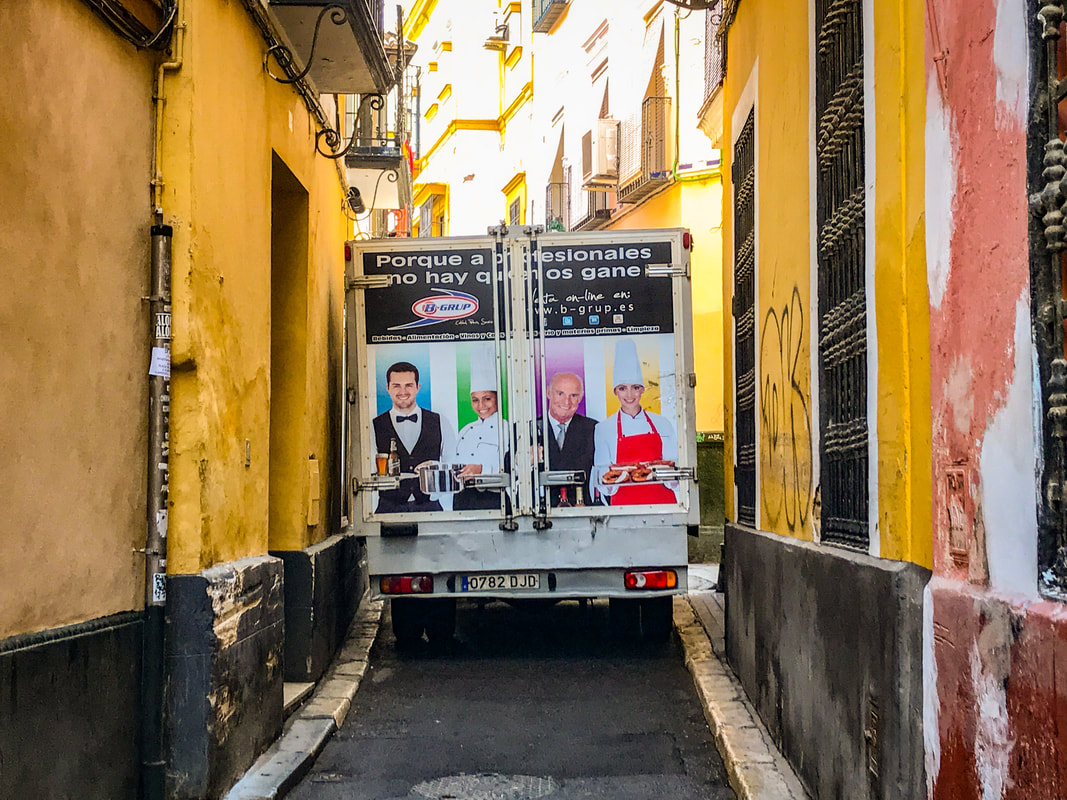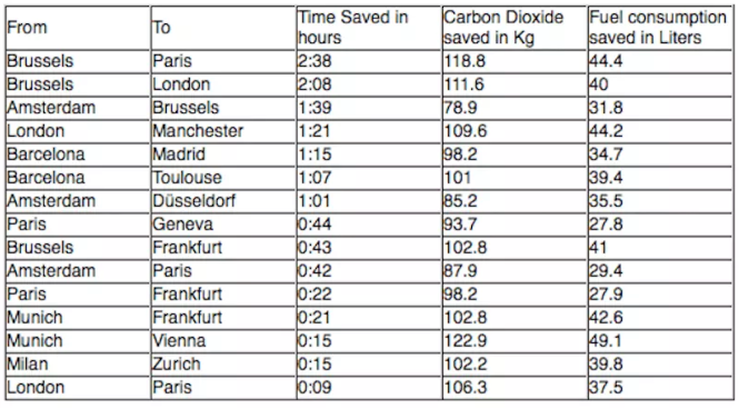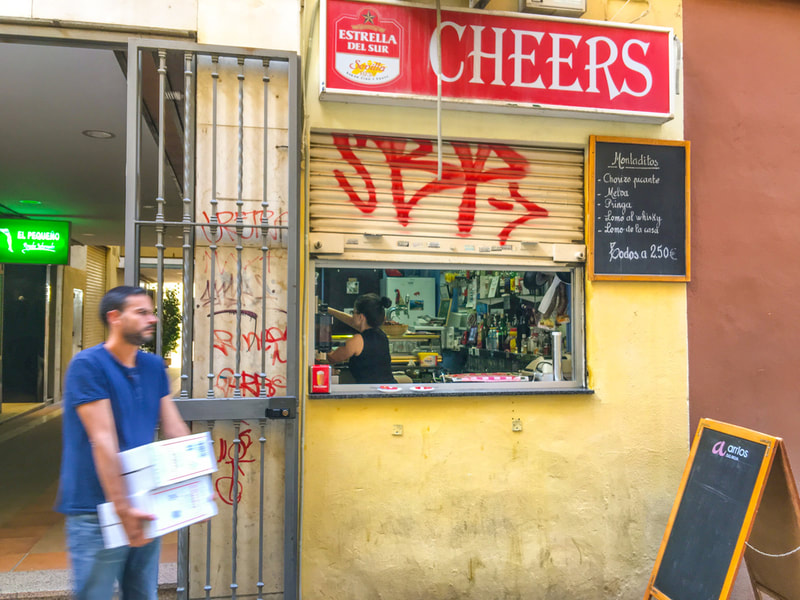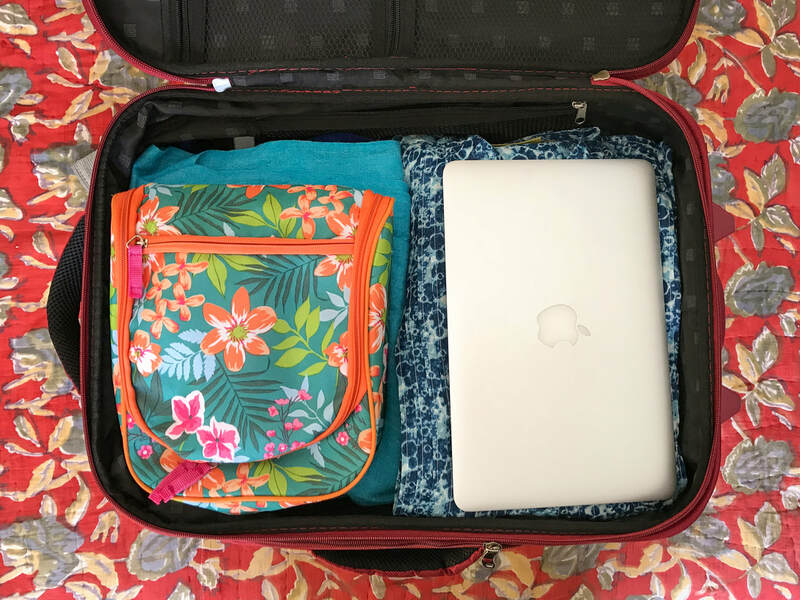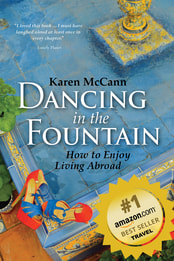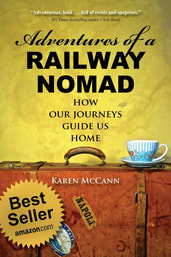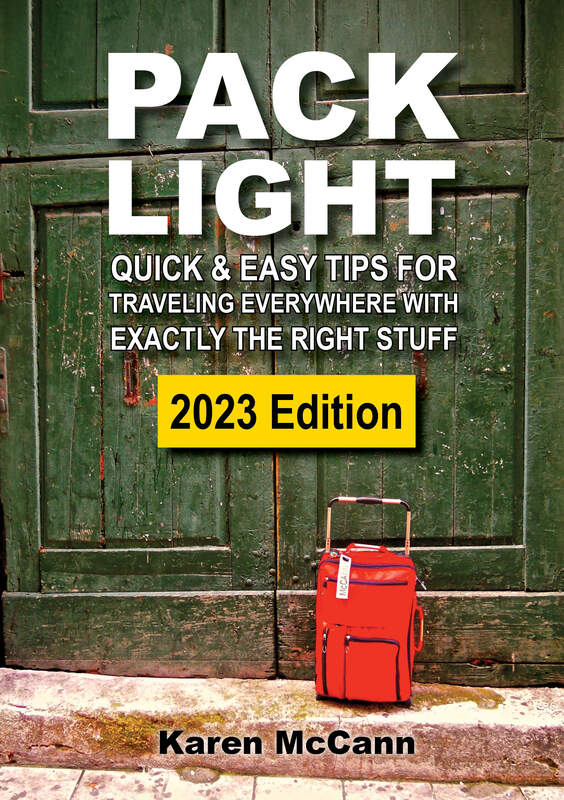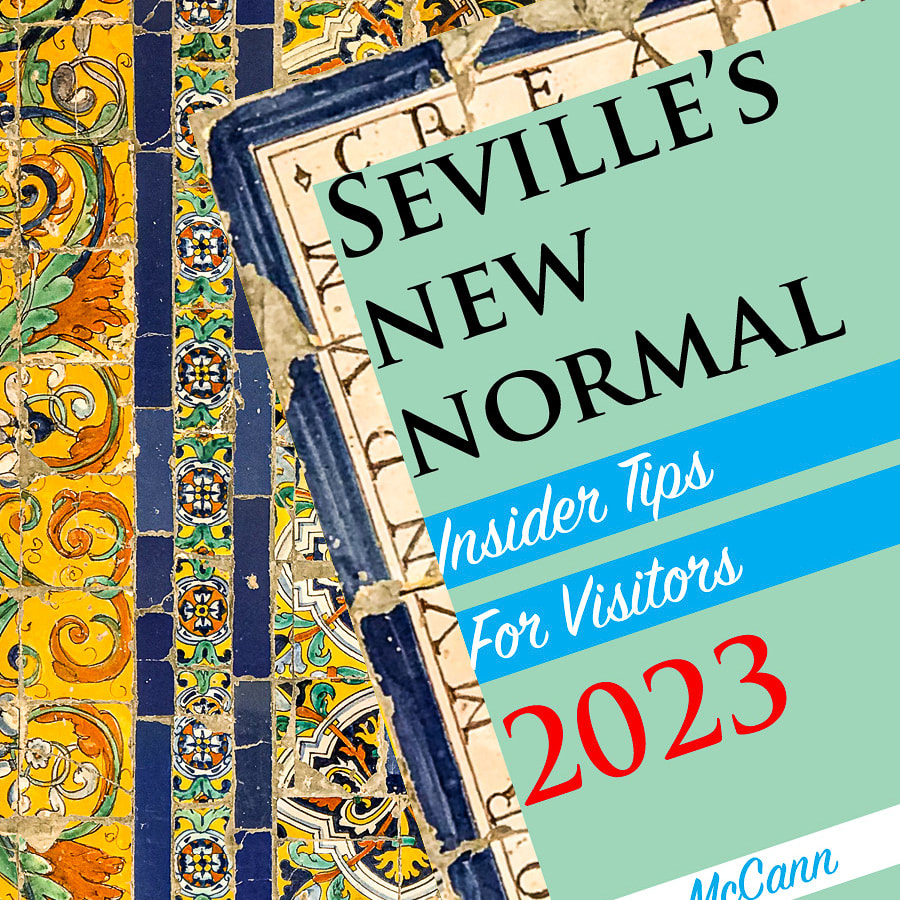|
During one of our early visits to Spain, long before we’d ever imagined moving here, Rich rented a car to drive some American friends to a mountain village we’d heard was particularly quaint. It proved to be as adorable as I’d hoped, with slightly crumbling whitewashed houses, potted geraniums, and a small central plaza where grizzled old men sat taking their ease on a weathered park bench. As we zipped by, one of the men waved and shouted, “Estrecho! Estrecho!” Hmmm. The word sounded familiar from my Spanish classes. A greeting, perhaps? I couldn’t quite put my finger on the meaning … It wasn’t until our rental car was wedged firmly between two stone walls at a bend in the ever-skinnier back lanes that it came to me. “Narrow!” I exclaimed. But of course by then it was too late to avoid disaster. “What are we going to do?” asked one of our friends from the back seat. “Climb out the sunroof and abandon the vehicle? Call for a helicopter to airlift us out?” But Rich is made of sterner stuff. He kept inching forward and back, under the amused gaze of every able-bodied resident of the village, until eventually, with considerable shrieking of metal and loss of paint, he worked the car free. We took another route gingerly back to the plaza, and there, beside the men’s bench, we noticed a very large sign advising everyone to park there and walk. We now take such signs very seriously. In fact, we’ve made it one of our goals in life never to drive in Europe again if we can help it. This is not a commentary on the difficulty of negotiating European roads and traffic. Oh sure, they can be a bit daunting, but hey, Rich and I are both hardened veterans of Boston’s back streets, New York City at rush hour, and those desolate Arizona highways where UFOs are so frequently spotted. I grew up in California’s car culture, in an area with very limited public transit, and cars really were the only practical way to get around. I bought into the belief that driving long distances is a uniquely American style of independence; it’s practically patriotic (as our gas companies and car manufacturers will be the first to tell you). But now that I live in Spain, with excellent rail service to all of Europe and beyond, I’m delighted to abandon the “freedom of the road” in favor of the luxury of stress-free travel. I no longer wrestle with maps, panic when the GPS cuts out, or engage in heated discussions about why we missed our turn. I don’t need to try to figure out the meaning of road signs, comply with Byzantine parking restrictions, or fret about dings and scratches. Instead, I sit in civilized comfort with my coffee, Kindle, and relaxed travel companion, enjoying the scenery and chatting with fellow passengers. Rich likes to pass the time playing with his food. Try doing this while driving a car — or come to think of it, don't! Incredibly, many of my fellow Americans do not share my sentiments on the subject of trains, and 27 million of them will be renting cars this year during visits to Europe. Even our closest friends and relatives seem surprised we don’t think this is a sound idea. We often have to work very hard to dissuade them from renting a car at the Seville airport, driving it into our neighborhood in the center of town (a nightmare of Biblical proportions), seeking a parking place for upwards of a couple of hours, and finally giving up and driving to the city outskirts to deposit the car at a large parking garage, where it will remain for the duration of their stay. “It just feels wrong not to have a car,” they tell us, after Rich and I have spent half an hour traversing the city on foot to collect them from the car park. “We don’t want to be an imposition.” Another firmly embedded belief is that cars are somehow faster and more efficient than trains. In fact, if you’re traveling between European cities —from London to Paris, say, or Amsterdam to Brussels — you’ll find railways are not only quicker than driving, they’re often quicker than flying. Last September, when Rich and I took the high-speed Eurostar from London to Paris via the Chunnel, we shaved nine minutes off the time it would have taken by plane; not much, I’ll admit, but still, that was nine more minutes in Paris — and nine minutes we didn't have to spend in a dreary airport lounge. Average Time Saved Traveling by Train Instead of Plane Another great thing about trains is that they connect to other forms of public transit such as ferries and buses, meaning there’s virtually no part of Europe you can’t reach. So how do you figure out what is the fastest way to get from Point A to Point B in unfamiliar countries? Rich starts his transportation research with an app called Rome2rio. You type in the city of origin and your destination, and it lets you know the time and cost of various transit configurations involving trains, buses, ferries, cars, and planes. Rich then consults the DB Navigator app for fuller details about stations, timetables, and where the train stops along the way, in case we want to consider an interesting detour or link up with a ferry port. Don’t get me wrong; sometimes a car is the best option for getting where you need to go in Europe or anywhere else. But next time you’re sorting out transportation, before you automatically Google car rental agencies, take a moment to look at trains — and the ferries and other forms of transit they connect with. Railways make the journey far more interesting, offer a different kind of freedom, and remind us that travel is, at its best, a way to transcend our ordinary lives, experience the world more vividly, and recapture the rapture of being alive we may have felt in our younger years. As author Dave Matthes put it, “I've always felt that distant train whistles heard in the dead of night are the universe's way of letting us know the best days are neither ahead nor behind us...they're happening right now, cradled in the palms of our hands.” Let’s not allow them to slip through our fingers.
YOU MIGHT ALSO ENJOY
11 Comments
3/15/2019 01:57:33 pm
This is great! We love trains for travel in Spain, Italy, France and London. Sadly, train travel in Greece isn't what it is elsewhere so if traveling to points outside Athens or other big citiies you'll either need take a bus, a tour or rent a car. If renting a car, one should make note that driving into villages here are much as you've described with your wedged in experience - park outside and walk, you'll be able to open the doors anyway!
Reply
Karen McCann
3/15/2019 07:22:28 pm
Yes, I've heard there aren't too many trains in Greece these days, Jackie, although I believe there's still one connecting Athens and Thessaloniki; Rich and I plan to try it out next time we're there. Last April we took buses and ferries around Greece, and that was wonderful. We got to see plenty of countryside without the hassle of finding our way or getting stuck on any narrow streets.
Reply
Karen - I love this story! Well, I love all your stories, but this one especially because it unearthed a childhood memory. Somewhere in Italy, it could have been Spain as well, and our family is firmly wedged between two stone walls in some godforsaken village. I was scared to death, maybe 6 years old, and thought we would never get out of there. I read the adults' alarm over the situation as absolute doomsday. I still remember how I admired my dad for eventually heroically just gunning the engine, huge gash on the side of the car be damned, and muscling our car out of the literally tight spot. I was so relieved.
Reply
Karen McCann
3/15/2019 07:30:25 pm
What a harrowing story, Sine! Your dad and Rich seem to have the same approach: do whatever you have to do to get free of the stone walls. Rich spent hours buffing scratches out that rental car, and to our astonishment the rental agency gave us back our deposit. As for your series on the rail system, yes, I love those stories! I can't imagine wrestling four kids and all their luggage on and off a train. My hat's off to you! And you're so right about the Eurail pass being overpriced. We did the numbers and now just pay as we go, and have saved a bundle. The idea of a Eurail pass is very romantic but the reality is, it's rarely worth it for most trips.
Reply
Faye
3/16/2019 01:11:49 am
I enjoyed this fun and educational post so much - and Sine’s comment as well! In my next life I want to be you and Rich and be citizens of the world. I love traveling but since I am alone, I have to satisfy my wanderlust by going on tours which really limit my need to be free to explore and experience!
Reply
Karen McCann
3/17/2019 07:45:25 am
I like company when I travel, Faye, whether a companion or a tour, because I constantly find myself wanting to say, "Hey, did you see that?!?" Usually it's something amazing, even wonderful, although as you point out, with today's headlines, there's plenty to be shocked and horrified about. One of the benefits of travel, especially to ancient lands, is the reminder of how much humans have survived in the past, and how resilient we are in the face of extraordinary challenges. It gives me hope that we may manage to get through these times with grace and courage.
Reply
C Saunders
3/16/2019 12:12:15 pm
I swear the walls on Spanish village houses move closer when they spot the tourist numberplate, not to mention mountains that throw rocks at you.
Reply
Karen McCann
3/17/2019 07:52:15 am
I always suspected the walls and rocks were on the attack, and now you've confirmed it, Carolyn. Drivers beware! Trains are so much more civilized as a rule, although I admit I've never seen anyone place newspaper on the seats for their feet. Brilliant! It is a shame that Portugal doesn't extend its train system to the Algarve, or even up to Seville. Maybe someday!
Reply
Carolyn Saunders
3/17/2019 10:20:05 am
One of these days I shall cross the bridge into Ayamonte and take the bus to Seville but I fear that most of that trip will be dull motorway. Still the end point will be wonderful 3/10/2022 05:06:38 am
This is a very informative—edifying article to all. Thanks a lot! Continue to post!
Reply
5/12/2023 03:01:00 pm
Driving in Europe can be a challenging experience, as highlighted by the author's unfortunate encounter with narrow streets in Spain. The incident serves as a reminder to heed warning signs and consider alternative transportation options. It's advisable to prioritize safety and convenience by utilizing public transportation or walking when exploring European villages.
Reply
Leave a Reply. |
This blog is a promotion-free zone.
As my regular readers know, I never get free or discounted goods or services for mentioning anything on this blog (or anywhere else). I only write about things I find interesting and/or useful. I'm an American travel writer living in California and Seville, Spain. I travel the world seeking eccentric people, quirky places, and outrageously delicious food so I can have the fun of writing about them here.
My current project is OUT TO LUNCH IN SAN FRANCISCO. Don't miss out! SIGN UP HERE to be notified when I publish new posts. Planning a trip?
Use the search box below to find out about other places I've written about. Winner of the 2023 Firebird Book Award for Travel
#1 Amazon Bestseller in Tourist Destinations, Travel Tips, Gastronomy Essays, and Senior Travel
BLOG ARCHIVES
July 2024
CATEGORIES
All
|

